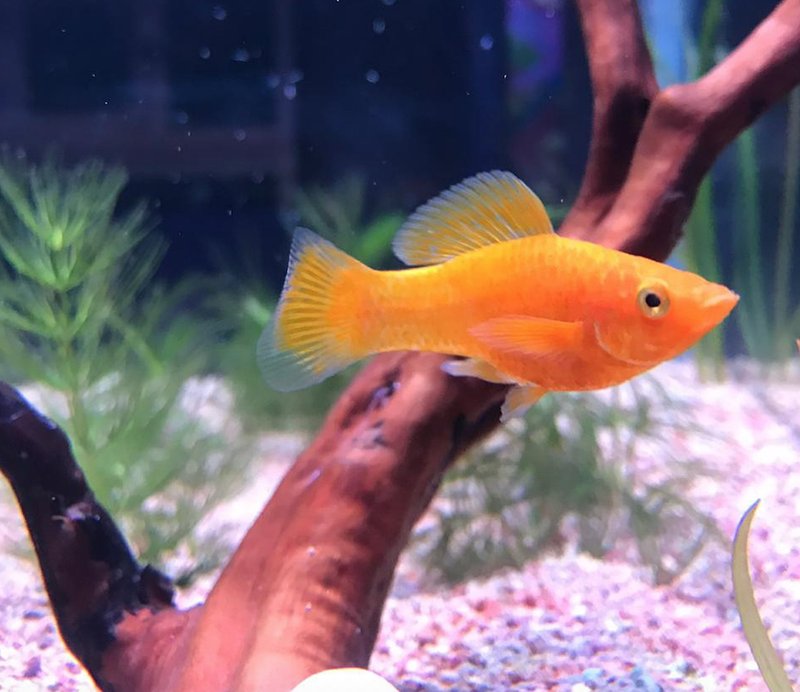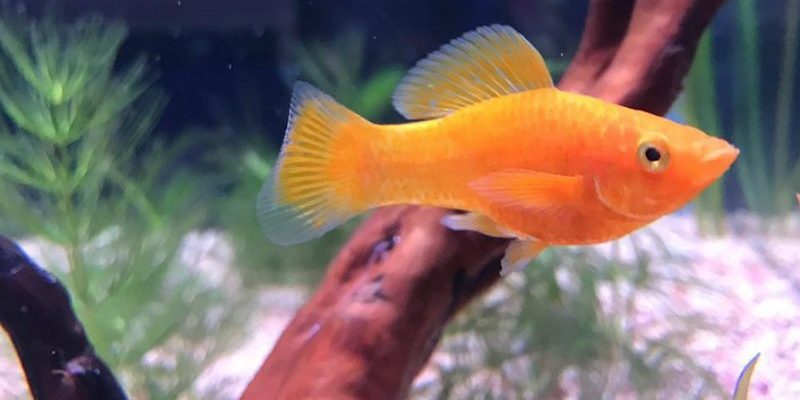
These little guys are lively and vibrant, making them a fantastic choice for anyone looking to add some flair to their aquarium. With easy-going personalities and bright colors, they’re a hit among beginners. If you treat them right, they’ll reward you with delightful antics and a splash of color in your aquatic world. So, let’s chat about how to ensure your platy thrives in its new home.
Setting Up the Perfect Freshwater Aquarium
Creating a welcoming environment for your platy starts with setting up a suitable freshwater aquarium. Think of it as preparing a cozy room for a friend. You’ll want to make sure it’s clean, safe, and filled with things your little fish will enjoy.
First off, pick an aquarium size that’s suitable for your platy. Platies do best in groups, so consider at least a 20-gallon tank to give them enough swimming space. A larger tank means a more stable environment, which is crucial for these fish. Also, remember to get a good filtration system. Freshwater fish like platies thrive in clean water, which helps them stay healthy and reduce stress.
Once you have your tank set up, it’s time to think about decorations. Platies love plants and hiding spots, so adding live or artificial plants can provide them with a sense of security. Just like us, fish appreciate a place to feel safe! Plus, plants help improve water quality.
Understanding Platy Behavior and Social Needs
You might be wondering what makes platies tick. These little fish are social creatures—they prefer to hang out in groups and are known for their friendly antics. If you’re planning to keep platies, consider getting at least three or four to avoid loneliness. They’re kind of like that friend who needs a crew to really shine!
Typically, platies are peaceful and get along with many other freshwater fish. However, it’s essential to avoid housing them with overly aggressive species. You want your aquarium to be a safe haven, not a battleground. Look for tank mates that also enjoy the same water conditions and aren’t aggressive.
Another fun fact: platies are livebearers, which means they give birth to live fry instead of laying eggs. If you have both male and female platies, you might find yourself with tiny fry swimming about! This can be an exciting experience, but be prepared with extra care and possibly a separate tank for the little ones.
Water Conditions: Keeping It Just Right
Water quality is a big deal when it comes to keeping platies happy and healthy. Think of it as the foundation of a sturdy house. If the water isn’t right, everything else can crumble. First off, you’ll need to maintain the proper water temperature. Platies thrive in temperatures between 70°F to 80°F. Using a reliable heater can help keep the water warm and cozy.
Next, monitor the pH levels. Platies prefer a pH between 6.8 and 8.5. A simple aquarium test kit can help you keep tabs on this. Regular water changes are also key to maintaining quality. Aim for changing about 25% of the water weekly. This helps remove toxins and keeps the environment fresh.
Don’t forget about ammonia and nitrite levels. Both can be harmful to your fish. Using a good filter and making sure to cycle your tank can help prevent spikes in these harmful substances.
Feeding Your Platy: What to Know
When it comes to feeding your platy, you’ve got plenty of options. They’re omnivores, which means they enjoy a mix of both plant and animal matter. Think of it as giving them a balanced diet to keep them healthy and energetic.
High-quality flake food is a good staple, but don’t hesitate to mix in some frozen or live food now and then. Things like brine shrimp or daphnia can make their day! You can also add blanched vegetables, such as zucchini or spinach. Just be sure to chop them into small pieces so the fish can handle them easily.
Feeding them once or twice a day is usually sufficient. Just make sure to only give them what they can eat in a few minutes. Overfeeding can lead to water quality issues and health problems for your fish. It’s all about striking the right balance—kind of like eating the right number of cookies (even if it’s tempting to have more!).
Common Health Issues and How to Spot Them
Just like any pet, your platy might run into health issues. Being able to recognize these problems early can make a big difference. One of the most common issues is ich, a parasitic infection that looks like white spots on the fish’s body. If you notice your platy scratching against objects or spending more time at the surface, it might be time to check for signs of ich.
Another potential problem is fin rot, which can occur when water quality is poor. Look for frayed or discolored fins. If you notice this, improving water conditions and possibly treating with medication can help. Regular checks on your fish will help you stay ahead of these issues.
And don’t forget about stress. Fish can become stressed due to changes in their environment or aggressive tank mates. Keeping their living situation calm and stable is vital.
Breeding Platies: An Exciting Adventure
If you’ve got both male and female platies, you might find yourself interested in breeding them. This is a fun experience, but it does require some preparation. First, ensure your tank is spacious enough to support new fry. You’ll also want to look into providing hiding spots where the fry can escape from larger fish.
Platies are relatively easy to breed. After a gestation period of around 4-6 weeks, you’ll start to see tiny fry swimming around. It’s a good idea to have a separate tank ready to go for the fry, as adult fish can sometimes eat them. This separation helps give your little ones the best chance of growing big and strong.
Feeding the fry is another considerations. They’ll need specially formulated fry food, which is usually powdered. Keeping an eye on their growth and health will not only help you learn but will also give you a sense of pride as you watch them thrive.
Caring for a platy in a freshwater aquarium is rewarding and joyful. It’s about more than just having a fish; it’s about creating a lively environment that fosters health and happiness. With some basic knowledge about their needs, you can provide a thriving home for these colorful little swimmers.
By keeping the water quality in check, feeding them properly, and being aware of their behaviors, you’ll find that platies are wonderful companions. Take the time to observe them, learn their quirks, and enjoy their antics. In the end, the effort you put into their care will give you countless hours of enjoyment and a vibrant aquarium to admire. Happy fishkeeping!

